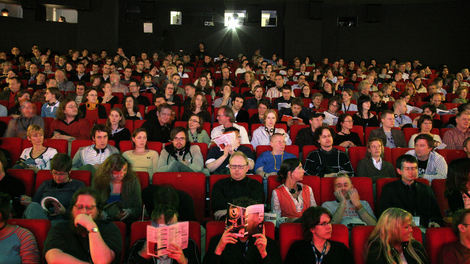Planning to go to the movies can be hard, so hard in fact that my plans fell through this week. There were many reasons why this occurred, and they can be explained using Hagerstrand‘s three constraints: capability, coupling and authority.
First of all, getting to the cinemas became an issue because I had to get my car serviced. Therefore I had a capability constraint that I had to overcome. However I arranged to get a lift to the cinema with one of my friends who lives close by and who was also going.
Timing was an even more difficult obstacle because the friends I was organising the outing with have other commitments such as full time jobs, casual jobs and university. Although there were only three of us, our combined commitments made arranging a time to see a movie extremely hard. Especially because the movie we wanted to see was only screening at certain times. We did agree to watch a showing of Lucy on Saturday, however two of us realised we had major assignments due in the next few days and decided to reschedule for next week. Therefore the coupling constraint prevented us from attending the cinemas.
The authority constraint was not an issue, as there were no restrictions that made us feel as though we shouldn’t be there.
What I found interesting about my situation was that I wasn’t worried about missing this movie, even though I really wanted to see it. I knew I would be able to see the movie later at home when it was released in stores or I could buy it online. I was really more disappointed that I wasn’t going to see my friends. But what does this mean?
If I asked you your ideal first date or the ideal place to meet friends, there’s a very good chance you’d say the cinema. But if I just asked “would you enjoy your first date if you hardly spoke or looked at each other the whole time, and you were both paying attention to something else?” You’d probably be inclined to say no. But this is where three elements play a major role: media, audience and place. If you add to that scenario: some sort of media entertainment, a larger audience that enhances the experience based on shared reactions and emotions, and a place that existed specifically to provide these two things in a comfortable and convenient way, the scenario becomes completely different.
This just shows the power media, audience and place have over public connections and experiences, both individually and combined. But a new trend has started, and in my opinion it’s because of three things: 1. convenience, 2. affordability, and 3. increased value in privacy. In 2013 cinemas in Australia suffered a decline of 2.5% in revenue (Allday 2014). There are many factors that could have impacted this decline, however a major factor often mentioned is the influence of the internet and therefore the increased ability to download movies (both legally and illegally).
1. Convenience:
Statistics show that the younger audiences (aged 15-24) attend the cinemas more than older generations (ABS 2011). Now if you don’t mind me saying, I believe the younger generations are lazier (or at least just less motivated) and therefore value convenience very highly in day-to-day life. The internet has provided this age-group with access to movies in their bedroom. Younger generations are often more adept with these new types of technology than others, and therefore will find this task almost effortless.
2. Affordability
People aged 15 to 25 years are less likely to have a steady income than older generations. Therefore the price of legal movies online, or even free illegal movies that can be pirated, are very appealing. Statistics show that Australia has the highest piracy percentage rate in the world (Lemay 2013).
3. Increased value of privacy
Privacy has always been valued highly, however recently it seems to have become more and more important to the younger generations. As social media and other technologies have taken a place in every-day routine, it seems younger people feel more comfortable interacting virtually rather than physically. In addition to this, people now have access to more advanced technologies at home (surround sound, flat screen televisions, 3D televisions, etc.). These allow people to enjoy a cinema-like experience in the privacy and comfort of home.
An industry report on Australian cinema shows that demand is decreasing, and this will “limit future screen growth” (Allday 2014). Based on the changes in social trends, it would seem this prediction might be true if cinemas don’t find new ways to get the audience excited about the cinema experience.
References
Allday, A 2014, IBISWorld Industry Report J5513: Cinemas in Australia, IBISWorld, viewed 28 August 2014, <http://clients1.ibisworld.com.au.ezproxy.uow.edu.au/reports/au/industry/default.aspx?entid=636>.
Australian Bureau of Statistics 2011, Perspectives on Culture, March 2011, cat. no. 4172.0.55.001, ABS, accessed 28 August 2014, <http://www.abs.gov.au/ausstats/abs@.nsf/Products/4172.0.55.001~March+2011~Main+Features~Cinema+Attendance?OpenDocument>.
Hägerstrand, T 1970, What about people in regional science?, Papers of the Regional Science Association, vol. 24, no. 1, pp. 6–21.
Lemay, R 2013, Australia extends global Internet piracy lead, Delimiter, viewed 28 August 2014, <http://delimiter.com.au/2013/10/01/australia-extends-global-internet-piracy-lead/>.

